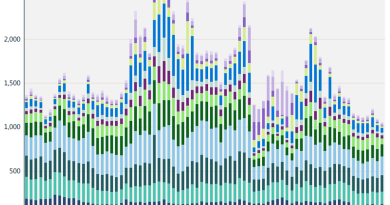6G cellular doesn’t exist, but it can be hacked

Arriving at a consensus on when 6G wireless will be widely available commercially is all but impossible, as this small sample size shows:
- Northeastern University researchers: More than five years, but probably not long after
- Nokia CEO Pekka Lundmark: Definitely by 2030
- ABI Research: Sometime in the 2030s
- A magic 8-ball I found in my basement: Reply hazy, try again
Then there is this intriguing quatrain by 16th century French physician, astrologer and renowned seer Nostradamus:
So much silver of Diana and Mercury,
The images will be found in the lake,
6G ubiquity by 2031, give or take a year
Of metasurface malevolence beware
That particular prophecy has always confounded me. Of what dangers was the great Nostradamus warning?
It appears the answer can be found in an experiment conducted by researchers at Rice University and Brown University. According to Futurity.org, the study team demonstrated that “an attacker could easily make a sheet of office paper covered with 2D foil symbols—a metasurface—and use it to redirect part of a 150 gigahertz ‘pencil beam’ transmission between two users.”
The success of the academic hack challenges what the researchers said is a common fallacy among some wireless technology wags that higher frequencies are less vulnerable to attacks.
“People have been quoted saying millimeter-wave frequencies are ‘covert’ and ‘highly ‘confidential’ and that they ‘provide security,’” study co-author Zhambyl Shaikhanov tells Futurity.org. “The thinking is, ‘If you have a super narrow beam, nobody can eavesdrop on the signal because they would have to physically get between the transmitter and the receiver.’”
How charmingly naive! The sobering reality, at least based on the team’s study, is that anybody can eavesdrop on some 6G wireless signals with common household items (office paper and an inkjet printer) and two consumer products you can run out and buy at Michaels (metallic foil transfer) and Office Depot (laminator).
Alice and Bob, meet your 6G hacker, Eve
In a research paper published in May, the study team explains the intent and results of their experiment:
We show how the eavesdropper (Eve) can design and deploy a diffractive metasurface that can be hidden in the environment as a “bug,” e.g., disguised as a part of the decoration or concealed among other objects in the area. Positioning it between the transmitter (Alice) and receiver (Bob), Eve intercepts the transmission and manipulates the electromagnetic waves of that transmission. Specifically, she alters the radiation pattern between Alice and Bob to simultaneously (i) establish a diffracted link directed towards Eve so that Eve can be located away from Alice and Bob and (ii) maintain Alice and Bob’s legitimate communication link so that Eve can avoid detection.
It might seem a bit premature to study potential security vulnerabilities for wireless technologies that are many years away from commercial implementation. But one of the researchers points to a hard lesson about the importance of anticipating technology security threats.
“If we had known from day one, when the internet first came out, that there would be denial-of-service attacks and attempts to take down web servers, we would have designed it differently,” study coauthor Edward Knightly, professor of electrical and computer engineering at Rice University, tells Futurity.org. “Awareness of a future threat is the first step to counter that threat. The frequencies that are vulnerable to this attack aren’t in use yet, but they are coming and we need to be prepared.”
We need to be prepared, indeed. Michaels isn’t running out of metallic foil transfer products any time soon.
READ MORE HERE



